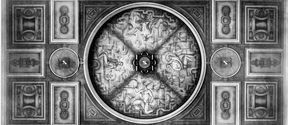In the Central European educational culture of the mid-1800s, the highest level of education in practical fields was given in the hochschule – a German term for institutions of advanced learning roughly equivalent to modern colleges but unable to confer doctoral degrees. Most of the hochschule in the field of technology were elevated in status to match the universities in the early 20th century, which also gave them the right to grant doctoral degrees. In the United States in particular, similar schools have been referred to as institutes.
Several institutions kept the word hochschule (lit. 'high school' in English and 'korkeakoulu' in Finnish) or one of its translations in their names even after gaining university status. This was the case with Helsinki University of Technology, which kept its Finnish name Teknillinen korkeakoulu until it became part of Aalto University in 2010, despite having the status of a university since 1908.
The Central European concept of higher education
By the middle of the 19th century, a diverse group of institutions had been founded in Central Europe to provide technical and industrial education. Some functioned as practical schools offering vocational training, while others pursued a scientific and theoretical basis for curricula as early as the 1830s.
In Germany, which in 1855 was still in the process of unification, the Association of German Engineers (Verein Deutscher Ingenieure, VDI) was founded based on the Hütte student association of the Berlin Institute of Technology. Under the leadership of its director, Professor Franz Grashof of the Karlsruhe University of Technology, VDI began determined efforts to promote the social standing of engineers and to develop engineering education. The aim was to attain the kind of governmental recognition already enjoyed by the architect profession. Grashof's intent was to revise the status of engineers in Prussia first – the rest of Germany would follow later.
Led by Franz Grashof and the VDI, the foremost educational institutions of the German-speaking world were given the title of Technische Hochschule (technical college) in 1864. Grashof sought to form an educational institution at the top of the technical education system that would base its teaching on the highest scientific standards. As this new type of school was not intended to teach practical skills, they would rid themselves of workshops as soon as possible. The curriculum was to include general education subjects such as history, languages and economics in order to raise the level of general education among engineers. Correspondingly, these schools would adopt characteristics associated with universities, such as academic freedom and a form of post-doctoral qualification known as the habilitation system.
By the 1870s, the highly theory-based German-style technical college – which had abandoned workshops to focus on scientific work – had lost its connection with the practice of engineering. The development was criticised by industry. The VDI addressed the problem in the mid-1880s by giving an unconditional recommendation that a mandatory one-year period of practical training be included in engineering education.
The influence of natural sciences research had placed heavy emphases on mathematics and physics within technical education, further widening the rift between education and practice. Geometry and graphics in general rose in importance as tools for applying the principles of technology. For studies, this meant a larger role for engineering drawing and descriptive geometry in the curricula.
In Germany, the absence of practical exercises in engineering education drew harsh criticism in the 1870s. Many technical colleges had to adopt laboratory exercises, which in practice replaced the discontinued workshops. The issue of practical training would remain unresolved for years, however.
One solution for bridging the gap between German technical colleges and the practical teaching required by industry was the establishment of university-based testing institutes for materials, the first of which was established in Munich in 1868. The concept spread to Berlin at the end of the following decade, and to Stuttgart in 1881. Helsinki got an institute of its own nine years later, based on an initiative by the Swedish-speaking engineering association Tekniska föreningen i Finland.
By the turn of the century, laboratory teaching had become once again a regular part of of mechanical engineering education in the German-speaking world. In the field of chemical technology, laboratories remained in use even during the period of pure science, and by the time electrical engineering became a subject of teaching, it was common for universities to operate their own electrotechnical laboratories. Thus higher education in technology rediscovered its connection with the material world.
Technical colleges in Germany were granted university status on 10 October 1899, which included the right to award doctoral degrees and gave teachers the title of professor. The Polytechnic Institute in Helsinki was transformed into the Helsinki University of Technology in 1908 as one of the first in Europe.
After technical colleges became universities, traditional German universities also began to establish new faculties in order to offer technology studies, following the American model. These new faculties could later be found especially in new universities in the smaller German states. As soon as the technical colleges began to turn toward academia, the two teaching traditions began to converge.
